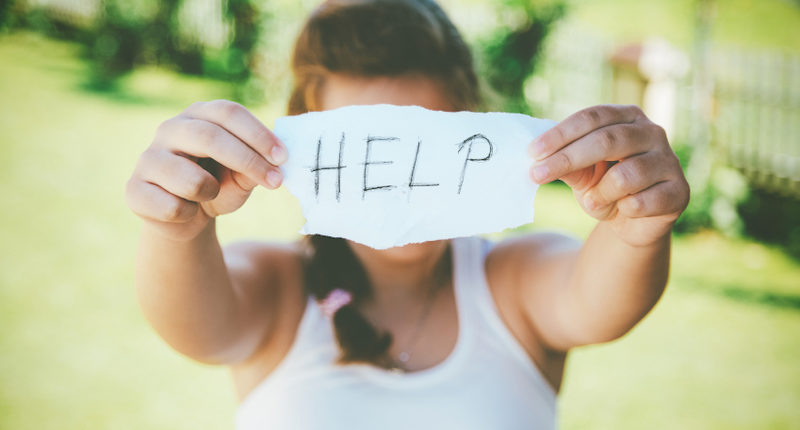5 Types of Domestic Violence and How to Receive Help

If you’re in an abusive situation that calls for necessary help, then it’s ideal to know the most common types of domestic violence. In addition, how an attorney can assist with your needs.
Read further for more details.
Introduction
Anyone can become a victim of domestic violence. It is not always the image of the weak woman, but rather some of the strongest males can even find themselves suffering at the hands of someone they live with. Parents being controlled by children, wives being abused by spouses, husbands being shamed by their wives, and so on.
Domestic violence can happen to anyone. That’s why knowing what domestic violence looks like – and how to get help – is so important. You can no longer believe that it wouldn’t happen to you or that your best friend is too strong to be a victim.
Know what abuse looks like, know the signs, and know where to turn for help.
5 Types of Domestic Violence
There are many different types of domestic violence and many different forms in which it can appear. For today, we will focus on the 5 types of domestic violence that seem to be most prevalent.
1. Physical Abuse
Physical abuse is likely the most well-known type of domestic violence that there is. It involves the use of physical force from the abuser to the victim. The behaviors that follow are the most commonly used:
- Hitting, punching, or smacking
- Kicking
- Strangling
- Burning
- Grabbing
- Causing damage to personal property
- Use of weapons
- Controlling medication
- Shoving
- Biting
Physical abuse can vary greatly in its level of severity. While many abusers don’t care where the marks are found, others work strategically to keep them out of sight.
2. Emotional Abuse
Emotional abuse is another type of abuse that is common, occurring when the abuser seeks control using non-physical methods. It is meant to damage the emotional and psychological well-being of the victim.
Emotional violence happens in many different forms — and can be difficult to identify. Here are a few of the most common ways emotional abuse surfaces:
- Gaslighting, which is a form of reality distortion meant to leave the victim questioning her sanity.
- Intimidating
- Name-calling
- Insulting
- Isolating
- Controlling behaviors
- Shaming and humiliating
- Stalking
- Blaming
- Severe jealousy
3. Sexual Abuse
Sexual abuse can happen – even in relationships where the partners are intimate. That’s because sexual abuse is about power, not sex. The abuser engages in sexual behaviors without consent. This can be done in different ways, including:
- Human trafficking
- Forcing the partner to have sex with others
- Inflicting physical pain during sex
- Sabotaging birth control measures
- Having sex with an unconscious victim
- Having sex even though the victim says no – or is too afraid to say no
4. Technological Abuse
As technology becomes more and more a part of our lives – and more advanced – technological abuse is becoming more prevalent. This abuse is found in young kids and adults, with the highest rate of incidence found among teens. This is likely due to social media accounts and unmonitored internet usage. So, what does technological abuse look like? Like this:
- Hacking into another’s private accounts
- Monitoring whereabouts and actions via social media
- Demanding or sneaking passwords
- Using tracking devices to monitor location, calls, messages, and other online interactions.
5. Financial Abuse
A financial abuser works to gain power over money and finances. He or she will exert control over bank accounts, credit cards, income, and so forth- as well as keeping the partner from being able to work. This type of abuse is more common than you may think and comes with the following signs:
- Causing a scene or harassment at the workplace
- Directly or indirectly causing the victim to lose employment
- Giving the victim an allowance
- Ruining the victim’s credit score
Break the Cycle
Most abuse comes in a cycle – one that you will probably recognize. It looks like this:
- The abuser threatens violence (in whatever form).
- The abuser makes his/her move.
- The abuser becomes apologetic, promises it will never happen again, and gives you gifts and treats of forgiveness.
- The cycle starts over.
This cycle may start minor, but it will progress with time. Rates of abuse and the severity of abuse will increase until they become severed – or worse. The longer you stay, the greater the abuse will become and the more of an impact it will have on your life.
Get help before it is too late.
How to Get Help
If you find yourself in a situation where you are the victim of domestic violence, there is hope – even when it doesn’t seem like it. There are people ready and willing to help you free yourself from the chains that are holding you.
It’s frightening and it may seem impossible. But, you need to get help and this is how you do it:
Create a plan. Put some thought into where you can go that would be considered safe places. Also include people who may be able to offer you assistance or protection if needed. These are not permanent locations/people but only for temporary shelter until you make your next move.
Gather your evidence. This will vary based on the type of abuse, but pictures of injuries, emails, voicemails, text messages – anything that can prove your abuse, hold on to it.
Reach out to local helplines. There are so many hotlines, helplines, local abuse shelters, and such that are put in place to help you. These individuals understand the dire need for discreet and confidential behavior – and their mission is to get you the help you need.
Contact an attorney. Finally, once you have escaped the risk of immediate danger, contact an attorney. This will be the first step toward gaining your rights back and additional protection from the law. Each case of abuse will differ from the one before it. An experienced lawyer will know the sensitive nature of the case and will develop a strategy to get you the justice you deserve.
Important Note: While all of these steps are ways that will get you the help you need and the new life you deserve, if you are in immediate danger, call 911 for help. Don’t wait! And, if you suspect someone you love is currently dealing with an abusive situation, there are things that you can do to offer help, guidance, and hope.
Are you in search for a certified attorney to represent you?
Let us help you find one today!

